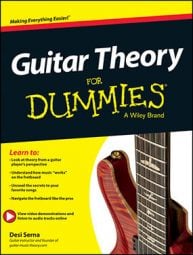To use the C form as a moveable barre chord on the guitar, your 1st finger acts like a capo and lays across (barres) the guitar neck while your remaining fingers form the rest of the chord shape.
One way to arrive at this fingering is to play an ordinary open C chord, replace fingers 1-2-3 with 2-3-4 (this puts your 4th finger on C at the 3rd fret of the 5th string), slide your fingers up two frets, and then barre across the 2nd fret with your 1st finger.
Here is what this chord shape looks like. The numbers indicate the fingering. When everything is in place, this shape actually becomes a D chord. Your 4th finger ends up on the new root D at the 5th fret of the 5th string, as shown in the fourth diagram.
![[Credit: Illustration courtesy of Desi Serna]](https://www.dummies.com/wp-content/uploads/419053.image0.jpg)
There is a demonstration of how to get started with fingering and playing a C Form Barre Chord at Chapter 4, Video Clip 5: C Form Barre Chord.
Don’t fret (no pun intended) if this barre chord is hard to play. This shape is rarely, if ever, used in its entirety. Instead, it’s usually broken apart into smaller, more easily fingered pieces. However, to understand where these fragments come from, you need to know the full form. So focus more on visualizing the shape of the C form barre chord and don’t worry about playing it perfectly.
If you’re having trouble fingering this whole barre chord, don’t barre completely across the fingerboard with your 1st finger. The only open strings in a C chord are the 1st and 3rd, so you need to barre only enough to cover those strings when you move the shape up.
Slide this barre chord shape around and play a major chord for any note along the 5th string, as shown here. Note that the root is always under your 4th finger.
![[Credit: Illustration courtesy of Desi Serna]](https://www.dummies.com/wp-content/uploads/419054.image1.jpg)

